9 sunscreen mistakes you don't have to make

You already know that it’s important to wear sunscreen—one Australian study even found that daily sunscreen use could reduce the risk of melanoma by as much as half. Even still, a 2015 study revealed most Americans are still not using sunscreen regularly.
What you may not know is that if you’re not applying sunscreen correctly, you could still be putting… Show More
You already know that it’s important to wear sunscreen—one Australian study even found that daily sunscreen use could reduce the risk of melanoma by as much as half. Even still, a 2015 study revealed most Americans are still not using sunscreen regularly.
What you may not know is that if you’re not applying sunscreen correctly, you could still be putting your skin at risk for wrinkles, premature aging, sunburn, and worse—skin cancer. From not applying enough to skipping application on cloudy days, learn how to avoid some common sun protection pitfalls with these expert tips.
Medically reviewed in June 2019.
Show Less
Choosing the Wrong SPF
A higher number doesn't always mean better protection when it comes to SPF. SPF refers to how much sun exposure is needed to burn skin wearing sunscreen vs. skin without it. But according to the Environmental Working Group, high SPFs offer only slightly better protection than their lower SPF… Show More
A higher number doesn't always mean better protection when it comes to SPF. SPF refers to how much sun exposure is needed to burn skin wearing sunscreen vs. skin without it. But according to the Environmental Working Group, high SPFs offer only slightly better protection than their lower SPF counterparts—SPF 50 blocks 98 percent of rays, while SPF 100 blocks 99 percent. The danger here is that people assume they can stay outdoors longer with higher SPF sunscreen, or they apply less, thinking it’s more effective.
Another number to consider? The expiration date. Sunscreen effectiveness begins to decline after that date and most have a shelf life of no more than three years.
Show Less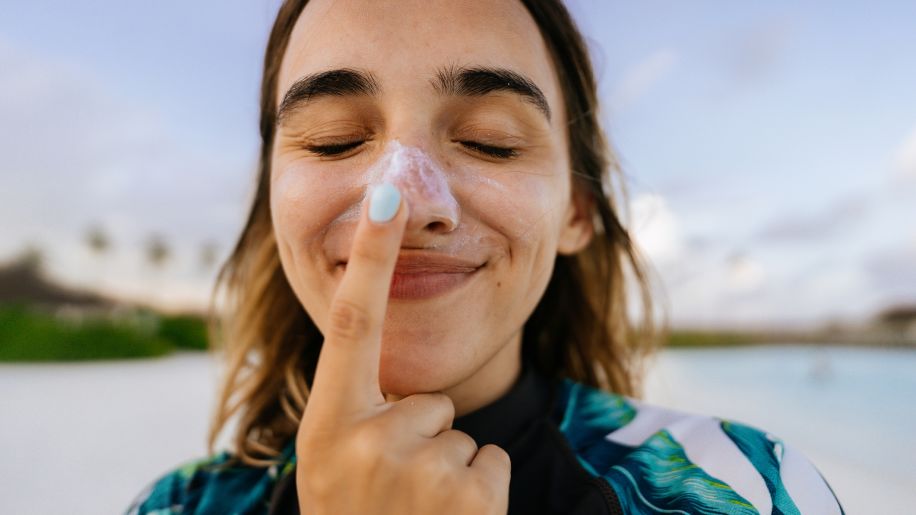
Bypassing Broad Spectrum
For the best in sunscreen protection, you should be looking for bottles or sprays labeled broad-spectrum.
Broad-spectrum sunscreen protects against both types of UV rays:
- UVA rays cause premature skin aging and penetrate deeper levels of skin tissue. These types of rays also generate free radicals … Show More
For the best in sunscreen protection, you should be looking for bottles or sprays labeled broad-spectrum.
Broad-spectrum sunscreen protects against both types of UV rays:
- UVA rays cause premature skin aging and penetrate deeper levels of skin tissue. These types of rays also generate free radicals that can potentially cause cancer.
- UVB rays are the main cause of sunburns; these types of rays mainly affect the top layer of skin cells. They also cause dangerous DNA mutations that can lead to skin cancer.

Thinking One Application Lasts All Day
Applying sunscreen once isn’t enough if you’re going to be outside most of the day. Sunscreen begins to break down after a couple of hours, usually from sweating, swimming or being toweled off. If you plan to be outside for several hours, experts recommend applying an ounce—about the amount to fill… Show More
Applying sunscreen once isn’t enough if you’re going to be outside most of the day. Sunscreen begins to break down after a couple of hours, usually from sweating, swimming or being toweled off. If you plan to be outside for several hours, experts recommend applying an ounce—about the amount to fill a shot glass—to over exposed areas for every two hours that you’re outside, including ears, hands, feet and the backs of knees.
Also—don’t be fooled by sunscreen labels that say “waterproof.” Reapply if you’re going to be swimming or doing an activity that causes you to sweat.
Show Less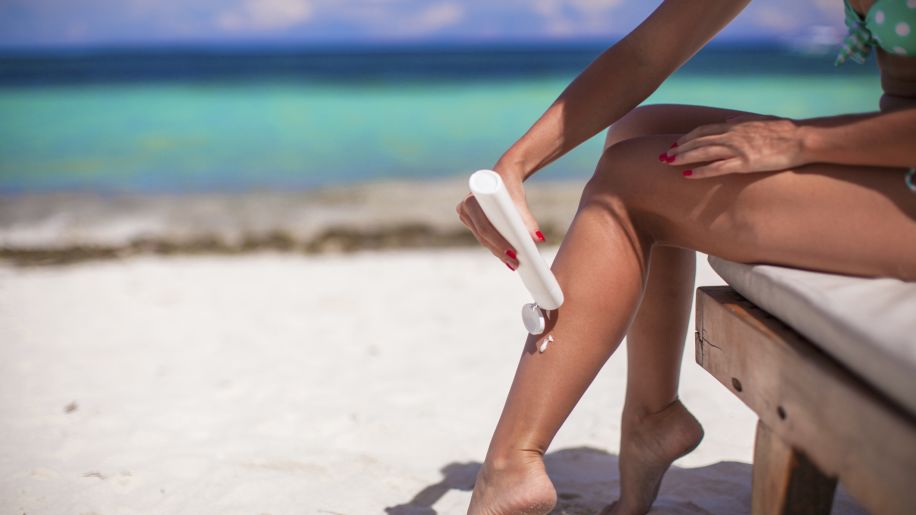
Applying Sunscreen Too Late
If you’ve already got your toes in the sand while you’re applying your sunscreen, you may have missed the mark.
According to the Centers for Disease Control and Prevention (CDC), for sunscreen to be most effective, it needs to be applied 15 to 30 minutes before you head outdoors. That gives the… Show More
If you’ve already got your toes in the sand while you’re applying your sunscreen, you may have missed the mark.
According to the Centers for Disease Control and Prevention (CDC), for sunscreen to be most effective, it needs to be applied 15 to 30 minutes before you head outdoors. That gives the ingredients time to begin binding to your skin, making them more effective once you get outside.
And don’t forget a hat, sunglasses and beach cover-up. You’ll receive the best sun protection when combining your sunscreen with these other methods.
Show Less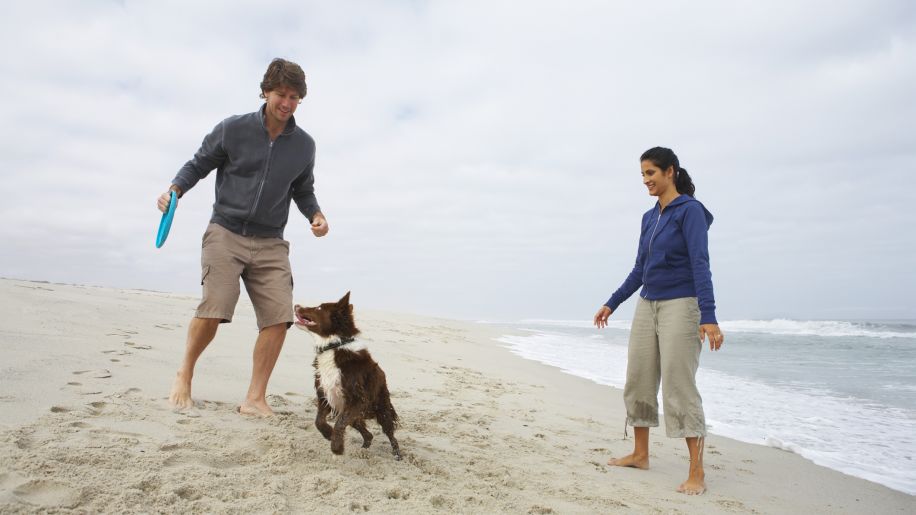
Passing on Sun Protection When It's Cloudy
Sunny days aren’t the only ones that can cause skin damage. Up to 40 percent of the sun’s damaging rays can reach you on cloudy days. And even if you’re inside, office and car windows still allow up to 75 percent of damaging UVA rays to pass through and harm skin. According to one study referenced… Show More
Sunny days aren’t the only ones that can cause skin damage. Up to 40 percent of the sun’s damaging rays can reach you on cloudy days. And even if you’re inside, office and car windows still allow up to 75 percent of damaging UVA rays to pass through and harm skin. According to one study referenced by the Skin Cancer Foundation, most skin cancers in the US are found on the left side of people’s bodies and faces, because that’s the side exposed to the sun while driving.
Bottom line: Make sure you apply adequate sun protection every day, regardless of how long you’ll be outside, weather, season, gender or ethnicity.
Show Less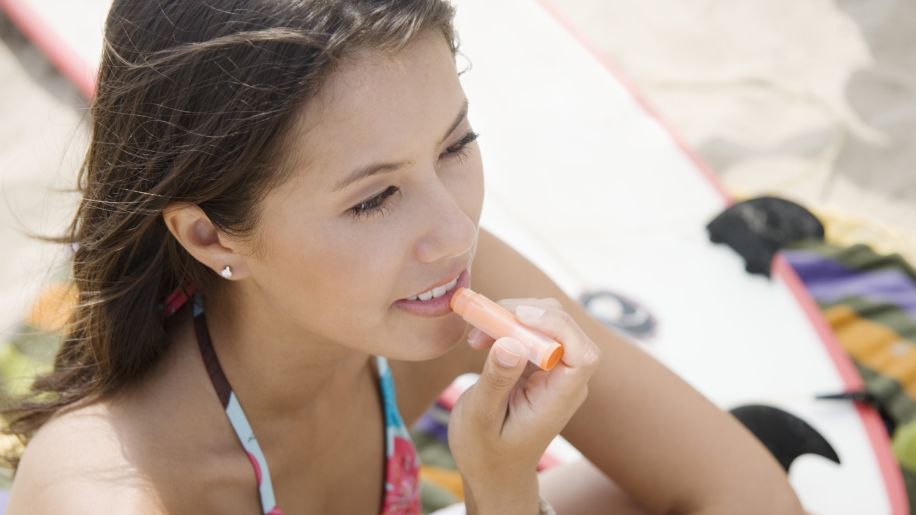
Skipping Your Lips (and Other Spots)
Arms, legs, shoulders and noses usually get slathered with sunscreen when we head outside, but there are other spots prone to burning that we tend to miss. Areas like the ears, feet, hands, back of the neck, scalp and lips get overlooked in sunscreen application.
Even backs get skipped—… Show More
Arms, legs, shoulders and noses usually get slathered with sunscreen when we head outside, but there are other spots prone to burning that we tend to miss. Areas like the ears, feet, hands, back of the neck, scalp and lips get overlooked in sunscreen application.
Even backs get skipped—one survey found that out of 1,000 people polled, 40 percent of men and 33 percent of women rarely or never used sunscreen on their backs. Combine this with the fact that only 36 percent of the study participants had their backs checked for skin cancer and it’s little wonder why skin cancer rates continue to climb.
Show Less
Guys, Thinking You Don't Need It
Fellas, it doesn’t matter if you’re mowing the lawn or playing a round at the golf course, you should still protect your skin from the harmful rays of the sun.
Only 5 percent of you wear sunscreen daily, and based on a survey by the Skin Cancer Foundation, 50 percent hadn't used it at all in the… Show More
Fellas, it doesn’t matter if you’re mowing the lawn or playing a round at the golf course, you should still protect your skin from the harmful rays of the sun.
Only 5 percent of you wear sunscreen daily, and based on a survey by the Skin Cancer Foundation, 50 percent hadn't used it at all in the past year. However, skipping this step could be costing you in the long run, and not just in the form of premature aging. Research has found that men aged 15 to 39 with melanoma are 55 percent more likely to die than women.
So guys, make sure you’re loading up on a broad-spectrum sunscreen with an SPF of at least 30 every day before heading out.
Show Less
Using Makeup As Adequate Sun Protection
Ladies, even if your favorite makeup comes with SPF, it doesn’t mean your skin is completely protected from the sun.
Many cosmetics have added SPF, and while this is better than no protection at all, it’s not really adequate for sparing your skin from the sun’s UV rays. The sunscreen in makeup isn’… Show More
Ladies, even if your favorite makeup comes with SPF, it doesn’t mean your skin is completely protected from the sun.
Many cosmetics have added SPF, and while this is better than no protection at all, it’s not really adequate for sparing your skin from the sun’s UV rays. The sunscreen in makeup isn’t always broad-spectrum, and many women don’t apply evenly all over their faces or don’t reapply throughout the day. So to defend the delicate skin of your face from the sun, apply broad-spectrum sunscreen beneath your makeup. Also, skip the lip gloss—it could be doing you more harm than good.
Show Less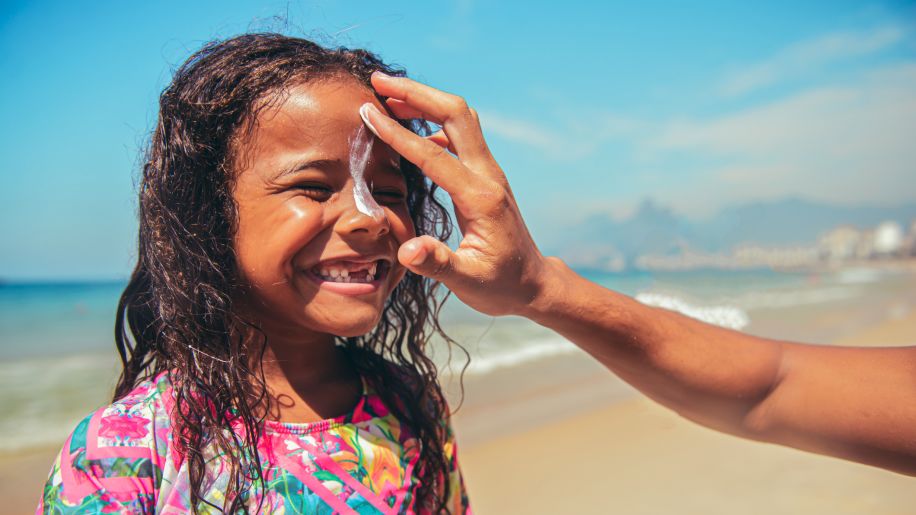
Kids' Sun Protection
Fifteen minutes is all it takes for the sun to damage unprotected skin, according to the CDC. This is especially dangerous for kids because they have more delicate skin than adults and it’s more susceptible to harmful UV rays.
Even though it’s hard to track down squirmy kids and apply sunscreen, it… Show More
Fifteen minutes is all it takes for the sun to damage unprotected skin, according to the CDC. This is especially dangerous for kids because they have more delicate skin than adults and it’s more susceptible to harmful UV rays.
Even though it’s hard to track down squirmy kids and apply sunscreen, it’s a necessary step before heading outside. One bad sunburn when they’re little can more than double your child’s chances for melanoma down the road.
To keep your kids safe from harmful rays, apply broad-spectrum sunscreen throughout the day, put them in UV-protective clothing, and make sure they seek out shade when the sun’s rays are at their peak, between 10 a.m. and 4 p.m.
Show Less
Speak to an Expert About Sun Protection
Warm-weather months are a great time to get outside and enjoy the sun; just remember to be safe.
Keep an eye on your skin for unusual marks or moles, and schedule an appointment with your doctor if you notice any potential signs or symptoms of skin cancer. Also, be proactive about prevention. The… Show More
Warm-weather months are a great time to get outside and enjoy the sun; just remember to be safe.
Keep an eye on your skin for unusual marks or moles, and schedule an appointment with your doctor if you notice any potential signs or symptoms of skin cancer. Also, be proactive about prevention. The end of summer is a great time to schedule an annual skin exam with your dermatologist.
Find one in your area to schedule your next skin check-up.
Show LessFeatured Content

slideshow
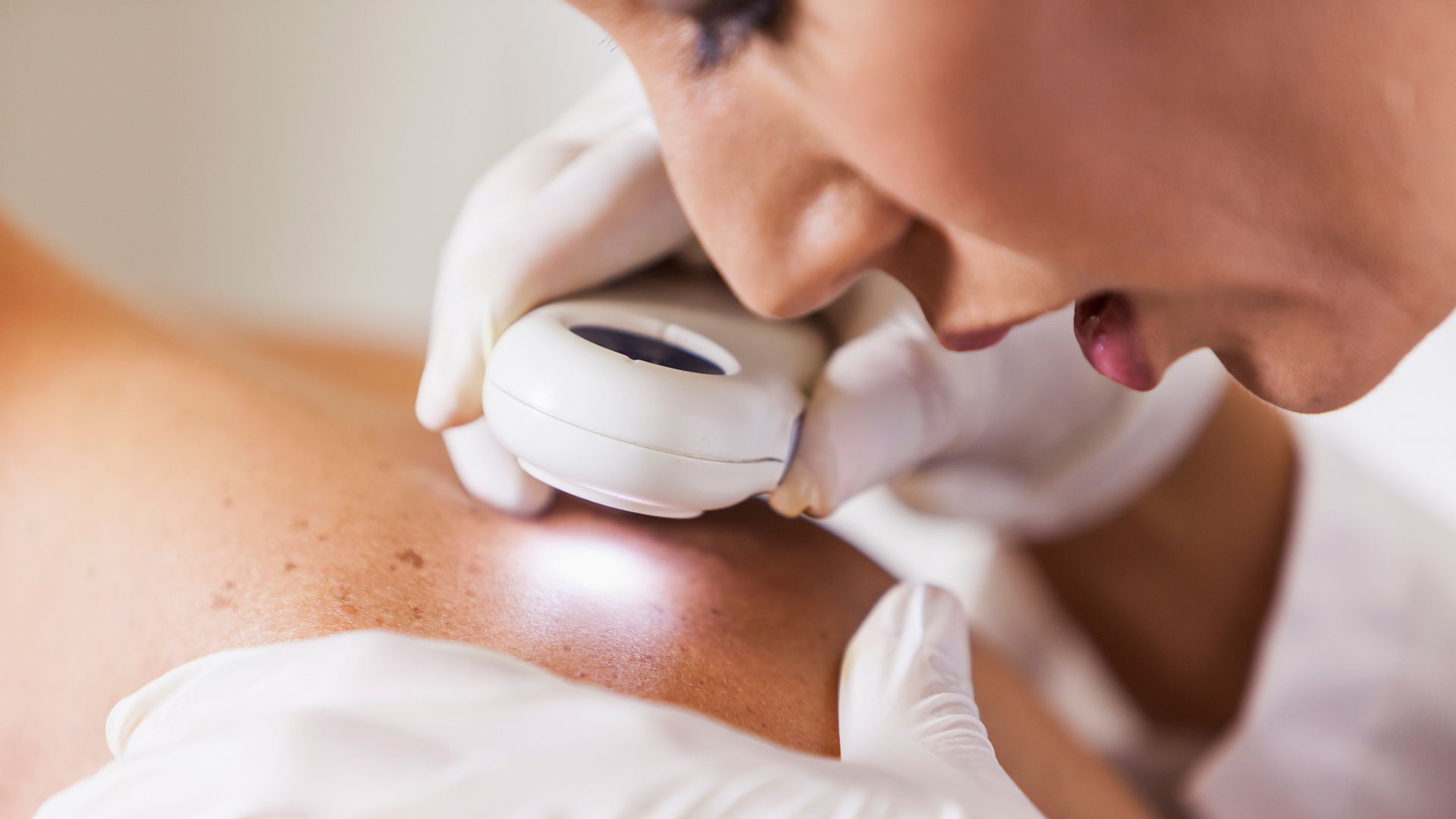
article
